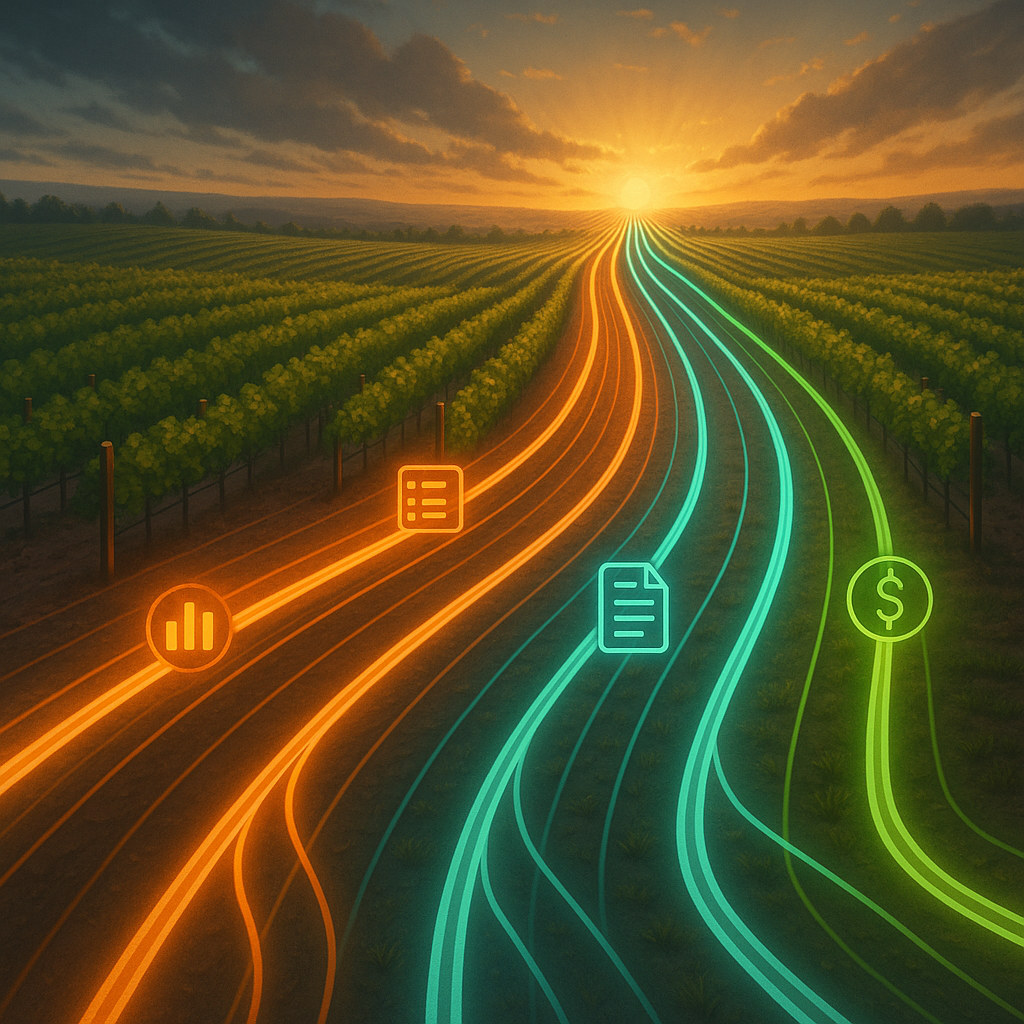Even in a challenging sales market, smaller wineries are seeing impressive growth. Software can help them maximize it.
At the time of this writing (Harvest 2025), the general state of the U.S. wine business can feel pretty grim, with news of slumping sales casting a pall over the industry.
But we’ve seen a glimmer of hope among those dark clouds. Smaller wineries—who have built up strong local followings of consumers—are weathering the current economic storm quite well overall. They may even be driving a slow turnaround for the American wine industry in general.
Interestingly, this has been happening in places that you might not expect: in USA wine regions outside of the West Coast states that dominate American wine production. Small wineries in Georgia, Virginia, New Mexico, Idaho, and New York are telling us that they are actually growing. In some cases, they are even doubling production. Yes, even during these otherwise trying times for the wine market.
Many of those outfits make just a few thousand cases of wine annually. But from a percentage standpoint, their growth is incredibly impressive, representing major increases in the size of their businesses.
Growth Brings Complexity
What’s striking about these wineries is how they’re growing. They’re not just making more of the same - they’re expanding their business models.
That might mean:
- Taking on custom crush work for other producers
- Experimenting with different styles of wine, like pét-nat or sparkling
- Broadening their lineup beyond wine with products such as RTDs, spirits, or cider
These strategies open exciting new doors. But every new line of business adds another layer of operational complexity, different production schedules, new compliance obligations, more moving pieces in inventory, and greater demands on already stretched teams.
For large producers, complexity can be absorbed by larger staffs and deeper financial reserves. For smaller wineries, the same complexity can quickly overwhelm limited resources if not managed carefully.
In fact, mishandling growth is one of the leading causes of failure for small businesses. To successfully manage growth opportunities, wineries need to handle them intelligently.
Turning Complexity into Clarity
So how an small wineries capture the upside of growth without letting complexity drag them under?
The answer: software.
Software gives smaller wineries a way to see through the fog of growth. It surfaces potential bottlenecks in production, inventory, and compliance before they become expensive mistakes. It helps the team spot changes and issues faster, so they can adapt more quickly when challenges arise.
Just as importantly, the right software frees up time. Instead of being buried in spreadsheets, redundant data entry, or siloed information, winery staff can redirect their energy toward higher-value activities, such as deepening client relationships, experimenting with new products, or interacting with consumers.
In short, software doesn’t replace judgment; it empowers it. By reducing the noise and routine workload, software creates space for winemakers, managers, and owners to focus on the decisions that move the needle.
Why Software Matters More to Small Wineries
This is why software is often more valuable to small wineries than large ones. Bigger producers can throw people and money at problems. Small producers don’t have that luxury. They need sharper tools to help them stay agile and focused.
As the wine industry battles back from the current economically challenging market, growth is just the opening salvo for many of these small producers. The next challenge is to use that growth to thrive and further evolve their production in an ever-changing marketplace.
When the time comes to take advantage of those future opportunities, the small, nimble producers who have the right software behind their operations will be at a distinct advantage—being able to make the right decisions, at exactly the right time.




.webp)